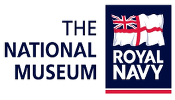| |
|
|
|
VISIT
TO SOUTH AFRICA
December 1926
8 December 1926 - week's
visit to Durban, first ever to the ship's namesake,
returning to China Station via Cape
12 December - left
Simonstown, near Capetown
15 December - arrived
Durban, east coast
(15 December - Colours
trooped and march-past, Durban)
16 December - was due to
leave Durban for Colombo, but delayed due to stay in
Simonstown having been prolonged
23 December - now due to
leave Durban on this date for Colombo, Singapore and
Hong Kong
24 December - left Durban
|
| |
|
|
|
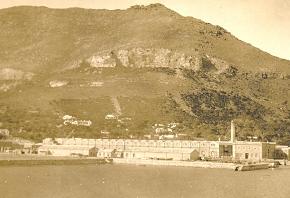
Dockyard, Simonstown
|
|
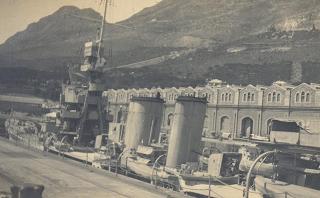
in drydock, Simonstown
|
|
|
|
|
|
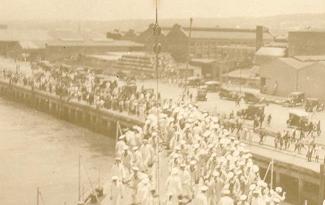
Cheer ship Durban
|
|
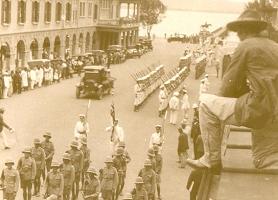
Trooping colours, Durban
|
| |
|
|
|
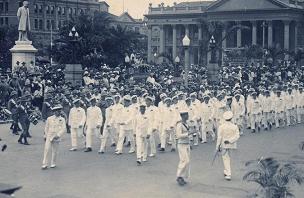
March past the Mayor outside Town Hall, Durban,
South Africa, 15 December 1926
|
|
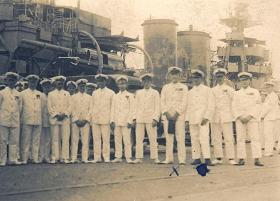
Durban, S.A., 15/12/26. These have
just arrived from Durban. I’d just received your
cablegram while this one was being taken. The blot
is my photo oppo
|
| |
|
|
|
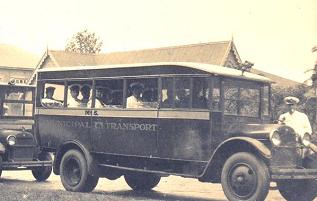
Pietermaritzberg, inland of Durban
|
|
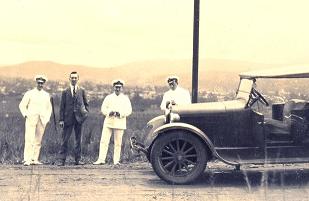
On road
|
| |
|
|
| |
|
|
|
SAILING FOR HONG KONG
29 December 1926-2 January
1927 - Colombo approved
1927
14 January 1927 - arrived
Singapore (3 day stay originally approved)
15 January - Hong Kong
approved
BASED
AT HONG KONG
January 1927 - April 1928
22 January 1927 - due to
arrive at Hong Kong, restoring 5th Cruiser Squadron
(CS) to five units, including CARADOC, EMERALD and
ENTERPRISE
11 February - "Merchant
Navy Signalling Practice" - DURBAN noted for her
efficiency on the China Station
18 February - left Hong
Kong with CARADOC for Wusung
CHINESE WATERS
21 February - arrived
Wusung
(15 March - at Shanghai)
25 May - left Shanghai for
Hankow
(4 June - foreign
warships in Chinese waters, including DURBAN)
(11 June - cricket match
in Hankow)
28 July - left Hankow for
Wei-hai-wei
31 July - arrived Wusung
and left for Wei-hai-wei
27 August - left
Wei-hai-wei for Hong Kong
4 September - arrived Hong
Kong
19 November - left Hong
Kong for Shanghai
22 November - arrived
Shanghai
24 November - left
Shanghai for Nanking
26 November - arrived
Nanking, greater part of winter stationed there
(27
November to 6 March - stayed in Nanking)
(27
December - football match in Nanking)
1928
CHINESE WATERS - continued
20 January 1928 - arrived
Shanghai
3 February - left Shanghai
for Nanking
4 February - arrived
Nanking; as of this date, destroyer KEPPEL has taken
the place of DURBAN at Nanking
16 March - left Shanghai
for Nagasaki
|
| |
|
|
|
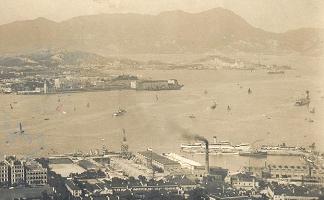
Hong Kong from the Peak, Kowloon in distance,
cruiser alongside in foreground (believed carrier
Hermes on right)
|
|
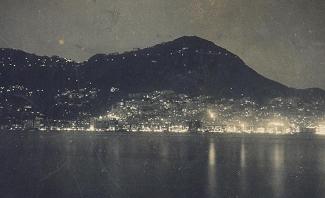
Hong Kong by night
|
| |
|
|
|
|
|
|
|
VISITS
TO SHANGHAI
1927-28
|
|
|
|
|
|
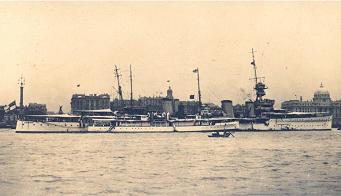
HMS Emerald at Shanghai with
Vice-Admiral Sir Reginald Tyrwhitt’s (C-in-C China
Station) yacht alongside
|
|
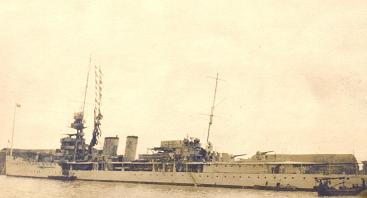
Alongside at Shanghai 15/3/27
|
| |
|
|
|
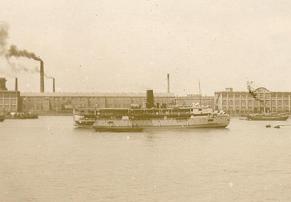
Shanghai side
|
|
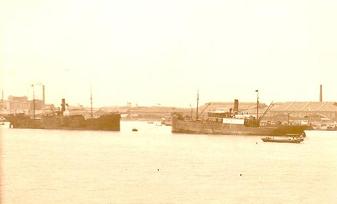
Across river from ship
|
| |
|
|
|
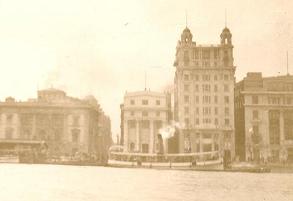
Customs House and Bund, Shanghai
|
|
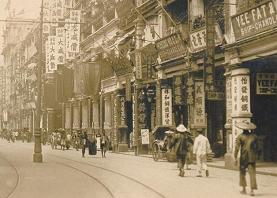
Queens Road West, Shanghai
|
| |
|
|
One
of our daily visitors. When I took his photo I
gave him 10 cents. He said no good, want 1 dollar.
He got it - Shanghai
|
|
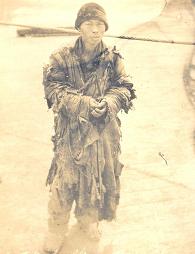 |
| |
|
|
|
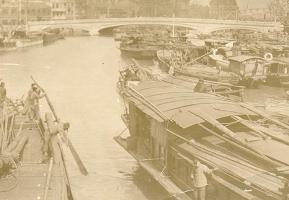
Soochow Creek to interior, Shanghai
|
|
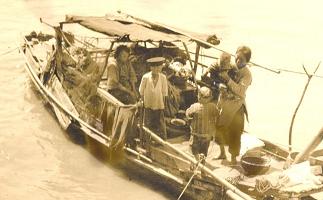
Sampan
|
| |
|
|
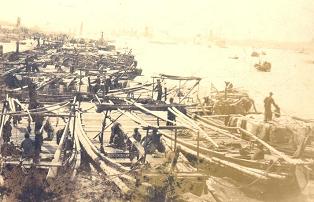
Start of the General Strike when the
Cantonese (the Southern Nationalists) captured
Shanghai. Taken from our quarterdeck showing all
riverside coolies tying up their boats during the
middle of the afternoon |
|
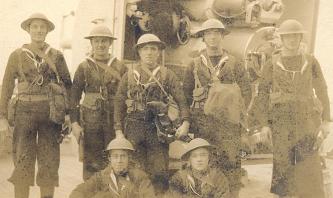
Signalmen ready for landing at Shanghai – 1 Yeoman
(George Smith, but in ratings uniform?), 2 L Sig, 2
Sig, 2 boys |
| |
|
|
| |
|
|
HANKOW
1927 |
| |
|
|
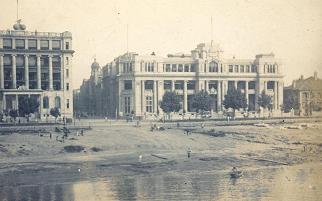
A view of the front Hankow I took
from the bridge with the stand camera last Sunday. The
tall building is the National City Bank of New York.
The other is the Hong Kong & Shanghai Bank which
is deserted and used by us as a beer bar. The small
building is alongside the British Consulate. In normal
times the river should be as high as the bottom of the
walls that lines the roadway. |
|
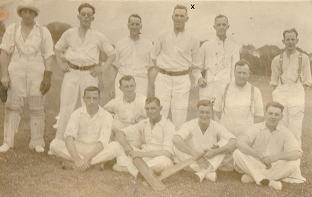
CPO’s Cricket Team, Hankow Race Course, Sunday 11 June
1927 |
| |
|
|
| |
|
|
|
| |
| |
BACKGROUND
TO CHINA, 1927 AND 1928
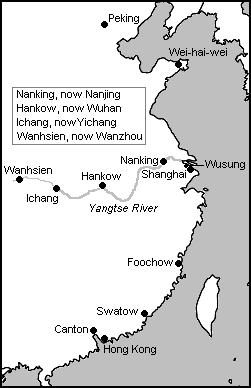 The
ancient Chinese Manchu Empire came to end in 1911
when Yuan Shih-kai took over as an authoritarian
Prime Minister in Peking (Beijing), while at the
same time Sun Yat-sen was proclaimed President of a
new republic in Nanking. Sun was leader of the
Koumintang (a nationalist party dating from 1891,
which wanted a democracy based on parliamentary
majority). However to avoid civil war, Sun stepped
down in favour of Yuan. It was at this time that the
six-year old Pu Yi was forced to abdicate - the
subject of the 1987 film, "The Last Emperor". The
ancient Chinese Manchu Empire came to end in 1911
when Yuan Shih-kai took over as an authoritarian
Prime Minister in Peking (Beijing), while at the
same time Sun Yat-sen was proclaimed President of a
new republic in Nanking. Sun was leader of the
Koumintang (a nationalist party dating from 1891,
which wanted a democracy based on parliamentary
majority). However to avoid civil war, Sun stepped
down in favour of Yuan. It was at this time that the
six-year old Pu Yi was forced to abdicate - the
subject of the 1987 film, "The Last Emperor".
Although the Koumintang
won a majority in parliament, Kuan wanted to be more
than a figurehead, outlawed Sun and his party and
dismissed parliament. Sun regrouped in the Canton
area where he set up a rival government. In 1916
Yuan died, a weak government was established in
Peking, the Koumintang managed to hold onto Canton,
but most of China fell into the hands of rival,
lawless war lords. China gained little profit or
prestige from entering World War 1 as an ally. A few
Chinese turned to the new Soviet Union for help and
in 1921 formed the Chinese Communist Party. They
even persuaded Sun Yat-sen to accept Soviet help and
within a year the Koumintang and Communists were
working together. A Nationalist army was created,
the authority of the Koumintang around Canton
consolidated, and a start made on helping the poor
and resisting foreign exploitation.
Sun Yat-sen died in 1925,
Chiang Kai-shek emerged as his successor in 1926 and
lead Koumintang forces north, and in 1927, occupied
Nanking. In their advance, his troops seized foreign
property, especially British and American, and
routed the war lords. Chiang was a nationalist,
Japanese Army-trained, and had studied the Russian
military in Moscow in 1923, but did not approve of
communism nor the Chinese Communist's treatment of
businessmen and landlords. When the Nationalist Army
took Shanghai in 1927, he turned his forces against
the communists and their supporters in the
Koumintang in a bloody purge which killed many. The
Communists retired south while Chiang headed north
and entered Peking in June 1928. Chiang set up the
Koumintang government in Nanking.
China had a government,
but largely in the east, while the communists
reorganised in the south, the Japanese were in
Manchuria, and large parts of central and western
China remained untouched. By 1930, Chiang had
decided to eliminate the growing communist presence,
by which time a certain Mao Tse-tung had entered the
scene. By 1934, Mao was leading The Long March to
escape the Nationalists.
(Paraphrase
from "Success (Studybooks) in Twentieth Century
World Affairs" by Jack Watson, 3rd edition 1985,
pp277-8 - an excellent series of books)
The dates
of the photographs in this period and the sequence
of events are not known and require further
research. They include a visit to the ship by
Major-General John Duncan, North China Command who
was succeeded by Major-General A E Wardrop around
25 January 1928, whether at Shanghai or not is not
known. Also the landing of a Naval force from HMS
Durban at Nanking.
Foreign
warships in Chinese waters, including DURBAN, 4
June 1927
Foreign Warships in the
Yangtze (FROM THE TIMES NAVAL CORRESPONDENT.
With the arrival,
announced in The Times on Thursday, of the destroyer
Wishart at Shanghai, the total number of warships of
the Powers at this port was 51 at the end of May,
including three lying off Woosung. This was an
increase of eight over the total at the end of
April. The list is as follows:-
GREAT BRITAIN - Hawkins
(flagship), Emerald (cruisers); Keppel (flotilla
leader); Petersfield (minesweeper), Cockchafer,
Cricket, Mantis, Widgeon (gunboats); Wishart
(destroyer) ; and at Woosung, Despatch (cruiser)
and Argus (aircraft-carrier); total 11.
UNITED STATES -
Pittsburg (flagship), Richmond (flagship)
(cruisers) ; Bulmer, Hart, Noa, Parrott, Paul
Jones, Pillsbury, Pope, Preble, Preston, Pruitt,
Truxton (destroyers); Black Hawk (destroyer
tender); Elcano (gunboat); Chaumont and Henderson
(transports); and at Woosung, Marblehead (cruiser)
; total, 18.
JAPAN - Tone (flagship),
Hirado, Tenryu, Yahagi, Yakurno (cruisers); Kashi,
Take (destroyers); Torpedo-boats 10, 16, 18; Seta,
Toba (gunboats); Tsurumi (oiler); total, 13.
FRANCE - Jules Michelet
(cruiser, flagship), Cassiopee, Craonne, Marne
(dispatch vessels); total, 4.
PORTUGAL - Republica
(sloop).
SPAIN - Blas de Lezo
(cruiser).
ITALY - Libia (cruiser);
E Carlotto (gunboat); Volta (submarine depot)
total, 3.
The Netherlands cruiser
Sumatra has gone from the list since last month.
Ascending the Yangtze, the
distribution of the naval forces of the Powers,
according to the latest available information, is as
follows: At Chinkiang, there is the British
destroyer Verity, American destroyer Simpson, and
Japanese gunboat Sumida. At Nanking, there is the
British cruiser Carlisle and destroyer Seraph, the
American destroyer McCormick, and perhaps a Japanese
gunboat. At Wuhu, there are the British cruiser
Caradoc and two Japanese destroyers. At Kiukiang,
there are the British destroyer Wild Swan and
gunboat Woodlark, and the Japanese gunboat Katata
and torpedo-boat No. 12. This gives a total of
warships in the river between Shanghai and Hankow of
14.
The naval forces at Hankow
at the end of May included 31 vessels, a reduction
of seven on the total a month ago. The list was:
GREAT BRITAIN - Durban,
Vindictive (cruisers); Bee (flagship); Scarab,
Teal, and Mantis (gunboats); Veteran, Wanderer and
Witherington (destroyers); total, 9.
UNITED STATES -
Cincinnati (cruiser); Isabel (flagship), Monocacy,
Palos, Villalobos, and Penguin (gunboats); Edsall,
Peary, Stewart (destroyers); total, 9.
JAPAN - Sendai
(cruiser); Ataka, Hira, Hodzu (gunboats):
Amatsukaze, Hinoki. Tokitsukaze, Urakaze, and
Yanagi (destroyers); total, 9.
FRANCE - Algol and
Bellatrix (dispatch vessels): La Grandlere
(gunboat); total, 3.
ITALY - Muggia
(destroyer).
Certain warships have
again advanced above Hankow. and the French gunboat
Doudart de Lagree was reported at Chunking; another
French gunboat. the Alerte, being on passage up
river, as well as the dispatch vessel Algol. The
British gunboat Gnat and armed steamer Kiawo have
gone to Ichang, where the French gunboat Balny is
also reported.
As will be seen from the
foregoing, the grand total of warships and their
attendant vessels actually in the Yangtze at the end
of May was about 102, of which one-half were at
Shanghai.
|
| |
|
|
| VISIT
OF MAJOR-GENERAL SIR JOHN DUNCAN |
| |
|
|
|
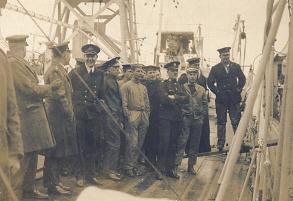
Onboard ship
|
|
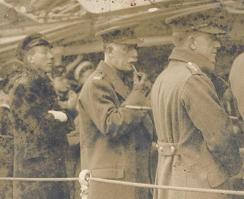
Lt Cmdr Agnew (Gunnery Officer, later commanded
Force K in the Med in WW2), Gen Sir John Duncan KCB,
Capt ?Kitton MC. Watching gun loading competition.
Sent to Illustrated London News
|
| |
|
|
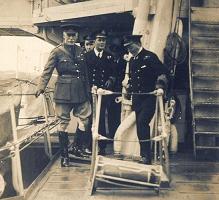
Inspecting ship. Sent to Times |
|
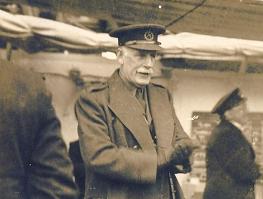
Photo sent to the Times
|
| |
|
|
|
|
|
|
NANKING,
including Naval landing party
27 November 1927-6 March 1928 |
| |
|
|
|
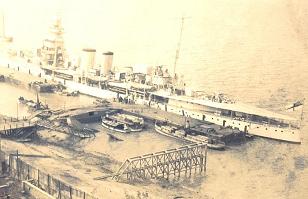
View of ship alongside International Export Co
Wharf. Taken from top of building. Note the broken
bridges
|
|
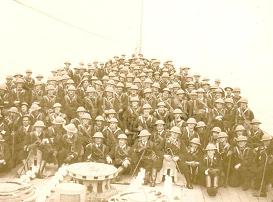
Naval landing party on forecastle (not known if
Shanghai or Nanking)
|
| |
|
|
|
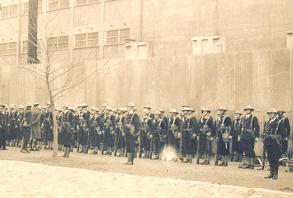
Inspecting Naval landing party.
Sent to Times (possibly General Duncan)
|
|
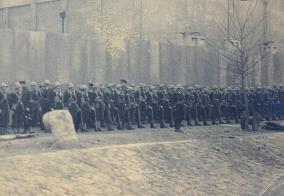
Landing Party, International Export
Co, Nanking
|
| |
|
|
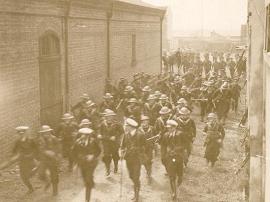
The attack |
|
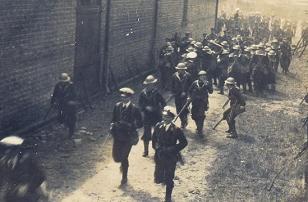
Battle Royal |
| |
|
|
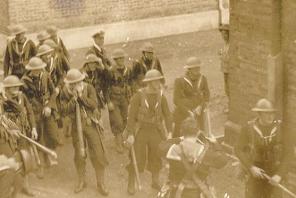
After the scrap |
|
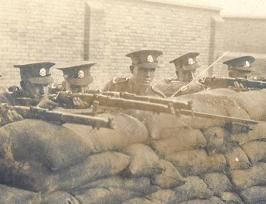
Guard of Beds & Herts Regiment behind first
barricade
(the
1st Battalion mounted the guard of honour when General
Duncan's successor arrived in Shanghai on 25 January
1928)
|
| |
|
|
|
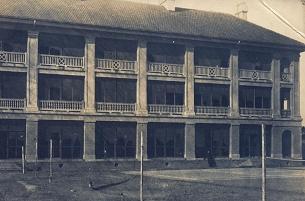
View of Managers House showing
damaged windows and verandah, taken last Sunday
|
|
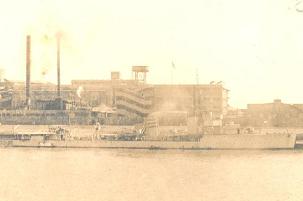
International Export Co, Nanking,
where “Cooks Farm Eggs” are manufactured. Stayed from
27/11/27 to 6/3/28. HMS Keppel going alongside to
relieve us |
|
|
|
|
A number
of photographs are not included - "One
of the Rebels hung by the Federals behind the
Refinery, copied from one of the officer’s photos"
and beheadings.
And
in stark contrast ........
|
|
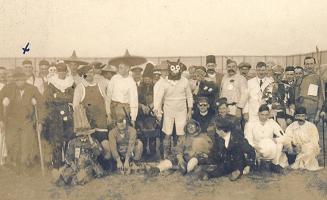
Officers v CPO’s fancy dress walking football match,
International Export Co’s compound, Nanking, China,
Xmas day (1927) |
|
|
|
|
| |
|
|
JAPAN and CHINA
March - May 1928
17 March 1928 - was due at
Kobe after visiting Inland Sea and Kure
18 March - arrived
Nagasaki and left for Miyajima
22 March - was due to
leave Kobe
22 March - should be at
Miyajima
23 & 24 March - should
be at Takamutsu
24 March to 4 April -
should be at Yokohama
24 March - arrived Kobe
29 March - left Kobe for
Foochow
CHINESE WATER - continued
2-6 April 1928 - should be
at Foochow
6 April - left Foochow
7 April - arrived Swatow
7-11 April - should be at
Swatow in course of last cruise with 5th CS
14 April - arrived Hong
Kong to await arrival of heavy cruiser BERWICK
21 April - should be
relieved in 5th CS by BERWICK, proceed to Bermuda
and join 8th CS, America & West Indies Station
24 April - due to leave
Hong Kong
29 Apr - 6 May due to call
at Yokohama, Japan
30 April - left Hong Kong
DEPARTED CHINA STATION
1 May 1928 (confirmed) -
left Hong Kong (Capt G L Coleridge, being relieved
on China Station by BERWICK, to replace CAIRO on
America & Indies Station)
5 May - arrived Yokohama
(spent week there)
13 May - due to leave
Yokohama
|
| |
|
|
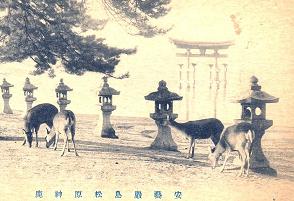
Miyajima, sacred island |
|
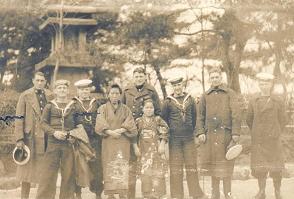
Where East meets West taken in Museum grounds, Kyoto |
| |
|
|
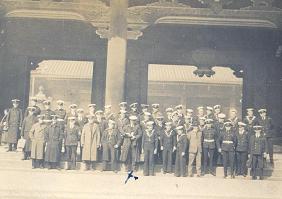
Outside the largest shrine in Japan at Kyoto. I’m just
winding up my camera consequently no can see face |
|
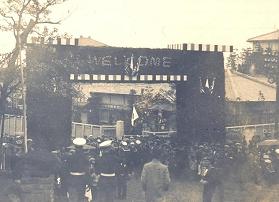
Entrance to the park, Yokohoma |
| |
|
|
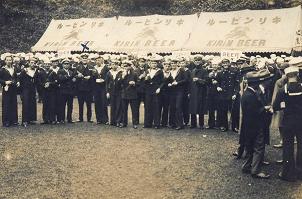
With my chop sticks & sushi, Kirin beer (brewed
from 1907 and still around. Note the US sailors) |
|
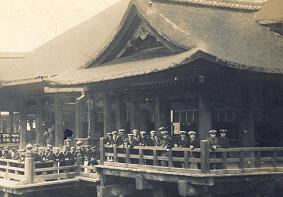
Group taken at shrine on the mountain side |
| |
|
|
| |
|
|
17 May 1928 - due to reach
Honolulu, Hawaii (after reportedly due to leave
Yokohama on the 13 May)
22 May - arrived Honolulu
29 May - left Honolulu for
Esquimalt, British Columbia (BC), Canada
6 June - arrived Esquimalt
from Honolulu. Now reached America & West Indies
Station which includes Pacific waters, travel via
Panama Canal from main base at Bermuda. To visit
British Columbia ports over next two months.
12 June - left Victoria BC
for Kodiak
ALASKAN WATERS
June/July 1928
18 June 1928 - arrived
Kodiak
19 June - left Kodiak
21 June - arrived at
Valdez
24 June - left Valdez
26 June - arrived Juneau
30 June - left Juneau for
Sitka
5 July - left Sitka
10 July - left Wrangell
|
| |
|
|
|
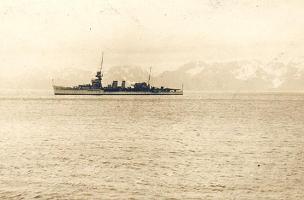
At anchor in Thumb's Cove, Resurrection Bay, near
Seward. This is the one I took for an Xmas card
|
|
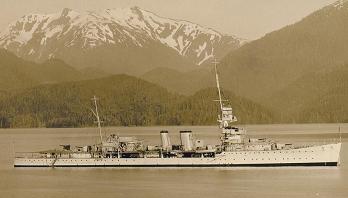
Resurrection Bay
|
| |
|
|
|
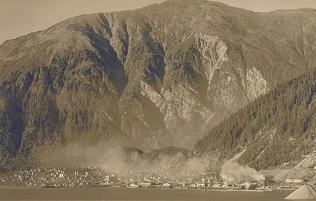
Juneau
|
|
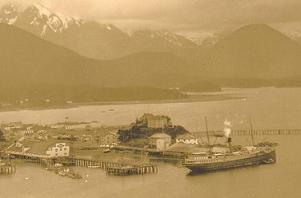
Sitka (This and other post-cards produced at the
time by the Photoshop Studio are now in the Alaska
State Library collection) |
| |
|
|
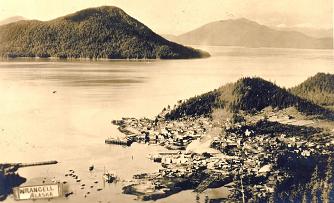
Wrangell |
|
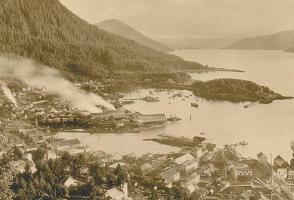
Wrangell |
|
|
|
|
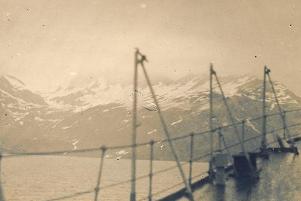
Alaska |
|
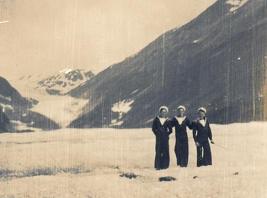
three sailors on glacier |
|
|
|
|
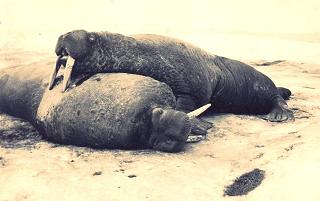 |
|
